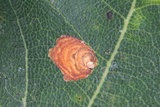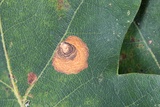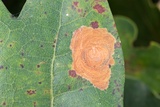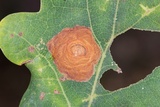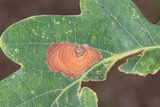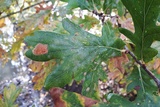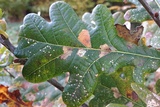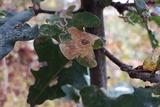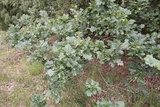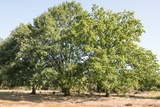Tischeria dodonaea Stainton, 1858 Species
Last modified: Nov. 21, 2024, 12:26 p.m.
Used to be a very rare and local species in Belgium, only known from the southern part of the country, with a stronghold in NA where it was locally not rare. Around early 2000, the species has spread all over the country and it is recorded now (2018) in all provinces, sometimes not rare at all.
Details
- Classification
- Family: Tischeriidae > Genus: Tischeria > Species: Tischeria dodonaea
- Vernacular names
- Bruine eikenvlekmot (NL), Small Carl (EN), Kleine Eichen-Schopfstirnmotte (DE)
- First mention in Belgium
- Fologne E. 1859b. Supplément au catalogue des lépidoptères de Belgique. — Annales de la Société entomologique belge 3: 133–142. On page 142 (as Tischeria dodonaea. V. H.). view page
- Status
-
Native
Distribution
Imago
Forewing ground colour ochreous brown, becoming a little darker brown in the apical area; no distinct pattern.
Museum specimens
No pictures yet!Specimens in nature
No pictures yet!Caterpillar
Yellow, with light brown head capsule and darkened last abdominal segment.
Mine
A very typical brown blotch with fine concentric arcs on the upperside of a leaf, around the place where the egg was oviposited. This place turns darker brown in later stages. Frass is ejected from the mine.
See also bladmineerders.be
Bionomics
The egg is oviposited on the upper side of a leaf.
Pupation takes place in a semi-circular chamber constructed in the larval feeding place. The species hibernates in the larval stage, inside the pupation chamber which is not detached from the leaf. It pupates in early spring.
The adults are active at dusk and come to light.
Flight periods
One generation a year during May–June. During favorable years, a second generation develops of which the moths are on the wing in August.
Observed on
- Host plant (species):
- Quercus robur, Quercus petraea and Castanea sativa
- Host plant (genera):
- Quercus
The species is oligophagous on Quercus, sometimes also on Castanea sativa.
Habitat
Forest margins, forest clearings, open places where Quercus trees are growing.

